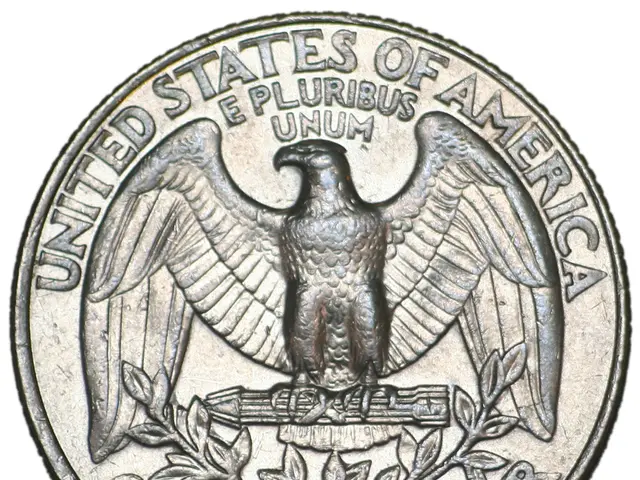Currency exchange rates shift as the Russian ruble inches closer to hitting 80 to the US dollar, with the Putin-Trump meeting attracting attention.
The Russian rouble is experiencing increased volatility against both the U.S. dollar and Chinese yuan, with several factors contributing to this trend.
Key among these factors is the upcoming meeting between U.S. President Donald Trump and Russian President Vladimir Putin in Alaska on August 15, 2025. The uncertainty surrounding this meeting is injecting a significant amount of volatility into the market. While hopes for positive talks provide some support, the unpredictability of the meeting's outcome is expected to increase exchange rate volatility in the short term.
Another factor is the reduced government foreign exchange (FX) interventions. Previously, firms were compelled to sell a large portion of their foreign currency earnings to the central bank, propping up the rouble. However, with decreased intervention, less demand support for the currency is present, leading to its weakening.
Declining export revenues, particularly from energy exports, are another major pressure point. A 30% drop in oil revenues, combined with lower oil prices, has stressed federal finances and the trade balance, undermining confidence in the rouble.
Russia's budget deficit has also widened significantly, driven by reduced oil income and fiscal pressures. This fiscal strain, coupled with stagflation risks, weighs on the rouble's strength.
Monetary policy dynamics, including aggressive interest rate cuts, have also contributed to the weakening of the currency after a period of rouble appreciation earlier in 2025. Lower rates reduce the attractiveness of rouble assets, especially amid inflation and economic slowdown.
Market sentiment and importer behavior also play roles. Deferred import demand ahead of the New Year and increased foreign currency needs from importers may temporarily boost demand for foreign currencies, putting downward pressure on the rouble.
In summary, the rouble’s volatility arises from the interplay of geopolitical uncertainty due to the Trump-Putin meeting, diminished central bank FX interventions, declining energy export revenues, fiscal deficits, and monetary easing amid stagflation and economic contraction. The currency faces downward pressure against both the U.S. dollar and Chinese yuan, with notable sensitivity in the coming days around the summit.
- The volatility of the Russian rouble in its exchange rate against the U.S. dollar and Chinese yuan is indicative of the broader finance industry, given the influence of factors such as geopolitical uncertainty, reduced government foreign exchange interventions, declining energy export revenues, and fiscal deficits.
- The upcoming meeting between U.S. President Donald Trump and Russian President Vladimir Putin in Alaska on August 15, 2025, has injected significant volatility into the market and could potentially impact the defi or index of the Russian rouble.
- The energy industry in Russia has also contributed to the rouble's volatility, as a 30% drop in oil revenues and lower oil prices have stressed federal finances and the trade balance, undermining confidence in the currency.
- In the general news arena, politics plays a crucial role in the volatility of the Russian rouble, as uncertainty surrounding key international meetings and the unpredictability of their outcomes can significantly affect the exchange rate.




